In the apartment, phalaenopsis orchids are often grown, a plant native to humid tropics. To make the southern beauty feel good, create conditions as close as possible to the natural habitat of the flower. It is important to properly fertilize and feed the orchid during flowering and after it. Improper care and nutrition can delay the development, illness, or death of an orchid.
Content
Orchid needs
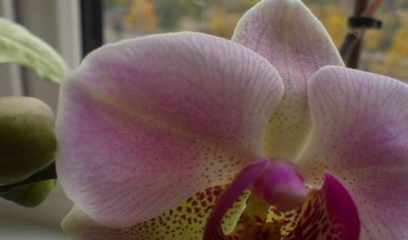
In nature, epiphytes do not need earthy soil, they exist in limbo, feed on rain moisture, air, fallen leaves, tree bark. The bark of coniferous trees is an ideal soil for orchids, it contains all the nutrients for the plant.
Over time, the nutritional components decrease, and the flower requires new fertilizers. Minerals are needed for growth, development and flowering: magnesium, bromine, iron, sulfur, calcium, potassium, phosphorus and a complex of vitamins. Phosphorus is involved in the formation of flower arrows, abundant flowering and its duration depend on it. Nitrogen fertilizers help build green mass. Potassium controls the water supply process, retains moisture in the cells, and prevents the plant from drying out. The element increases resistance to diseases and insects.
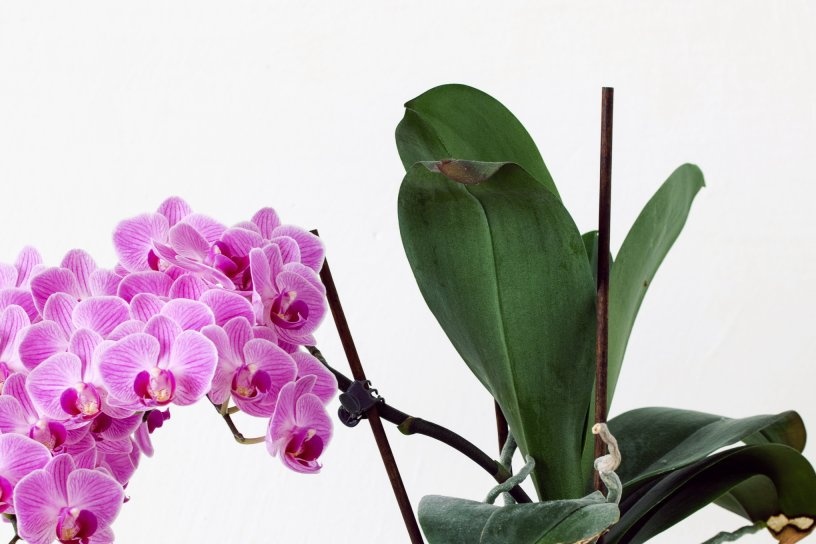 You may be interested in:
You may be interested in:Do I need to feed orchids at home
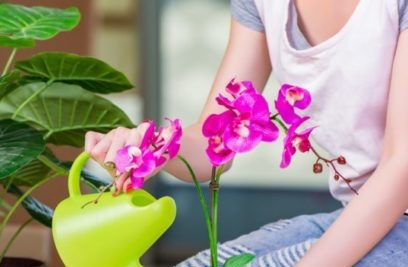
Every day, the orchid's root system absorbs nutrients from the soil. With a lack of nutrition, growth stops and peduncles do not appear. During irrigation, beneficial substances along with water flow out through openings in the pot. Therefore, flowers grown at home periodically require additional food. Both organic and minerals are needed for plant development.
Lack of nutrients causes the disease - chlorosis. Photosynthesis in the foliage is broken, they turn yellow, fall away. The plant ceases to grow and develop.
The orchid perceives better liquid fertilizer, granules and solids are also used, they absorb longer than liquid fertilizers. Pills or sticks bring much less effect, and do not give a result.
Type of dressing for orchids
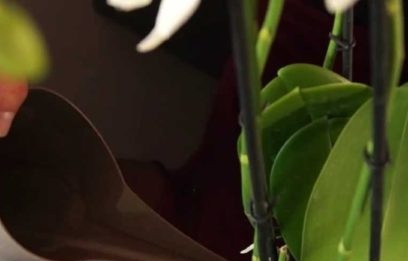
There are root and foliar dressing, as well as soaking the flower in the nutrient mixture. The root method feeds the plant 1 time in 7 days after moistening the soil. The drug is diluted in water and watered with a watering can on the substrate in a circle around the pot.
Foliar nutrition is resorted to in case of rhizome damage or during flowering. In hot weather, do not spray the flower. For foliar nutrition, fertilizers are diluted 3 times less than indicated in the instructions. Using a spray gun, the substance is sprayed onto the foliage, the procedure is done every 10 days. They make sure that there is no stagnation of water at the growth point. Do not spray the flowers and the base of the shoots. Water use warm 30 * C.
When soaking, water is poured into the container, fertilizers are diluted in it. The pot is first immersed in warm clean water for 20 minutes, then transferred to a solution with fertilizer, leaving the plant in it for 30 minutes.The container is removed from the liquid, allowed to drain water and dry, then the flower is transferred to its place.
When to feed an orchid at home
The frequency of top dressing is 2 times a month. During the formation of the buds, root feeding is stopped, but it is allowed to feed the orchid during flowering once a week by spraying. At the time of flowering, the orchid is stocked up with all the necessary substances, and begins to spend them for budding.
Feeding time:
- begin to feed flowers in the spring;
- for prolonged and abundant flowering of orchids, fertilizers are applied 2 weeks before the buds appear;
- after purchase and transplantation, 2 months should pass before the first feeding, the first time the dose of the drug should be minimal;
- before flowering, feeding is stopped; nutrition is resumed after flowering;
- fertilize during the growth period;
- feed flowers if there are signs of a lack of nutrients.
When you can not feed the orchid:
- at rest;
- during budding;
- after transplanting the plant into another pot or when moving it to another place, at this time the flower experiences stress and substances are not absorbed;
- you can not fertilize a flowering orchid, feeding orchids during flowering can cause the discharge of buds;
- if the tropical beauty is sick or infected with insects;
- flower just bought;
- in heat above 30 * C, and in cold below 16-17 * C.
Means for feeding
To feed orchids at home, liquid preparations are used. The composition of such fertilizers includes the necessary macro- and microelements, succinic acidvitamins. When buying a drug, you need a note on it "Fertilizers for orchids." The minerals included in the composition stop the deposition of salts in the substrate, maintain a certain soil acidity.
Organic fertilizers for flowering orchids
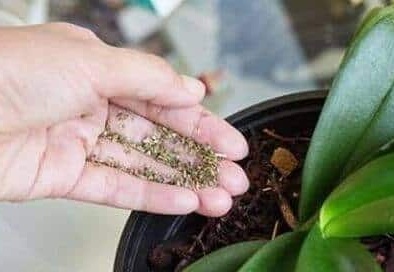
Manufacturers produce organic additives for orchids in the form of humates and biohumus. For epiphytes, this type of additive is harmful. Humic acids restore the microflora, which decomposes organic matter. Therefore, the bark, moss are quickly destroyed, become worthless. It is better to use organic additives from natural ingredients, home-made.
Horse manure, or mullein, is dissolved in water 1:10 and the plants are watered. Dry manure is also used, it is laid out on the surface of the substrate, it is absorbed during watering. The orchid is fed banana peels, compost, garlic water, potato broth, and ash from a tree.
Mineral popular drugs
Mineral liquid fertilizer is added carefully and only if necessary. The concentration of the substance is reduced by 3-5 times than indicated in the instructions so as not to burn the roots. Growth stimulator is used only for a healthy flower.
The best fertilizer for orchids:
- Zircon - strengthens the roots, promotes the formation of buds. Dilute zircon 1 ml per bucket of water.
- Epin is a stimulant for the development of rhizomes. Protects the immune system, a source of vitamins. Used for immersion and irrigation.
- Agricola is a thick fertilizer for root nutrition, for lush flowering, completely dissolved in water. 5 ml of the drug are taken per 1 liter of liquid, watered according to the instructions twice a month.
- Bona Forte - provides long flowering, helps to resume the growth of lateral processes. For 15 liters of water - 10 ml of the substance.
- Dr. Foley - contains vitamins, amino acids. Use 1-2 times a month.
- Brexil Combi - helps with chlorosis, contains iron and other minerals. In a bucket of water - 5 ml of the substance.
Other preparations for feeding orchids for flowering:
- Substral
- Greenworld;
- Etisso;
- Compo;
- Master;
- Fasco
- Pokon;
- Joy;
- Ideal;
- Effect;
- Flower heaven.
In addition to complex fertilizers, growth stimulants are used. They enhance the effect of mineral preparations, help to accelerate growth and build roots.
Growth Stimulants:
- Kornevin - stimulates the development of the root system. 5 g of powder 5 liters of water, watering once a month.
- Florgumat is a broad-acting drug that increases the flowering time, stimulates the growth of roots, and increases resistance to diseases. 10 ml of the substance 1 liter of water.
- Peat Oxidate - a humic substance that accumulates vitamins and minerals in the substrate, removes toxins from orchids, and nourishes cells. 40 ml of the drug are diluted in 10 l of water.
Orchid dressing folk remedies
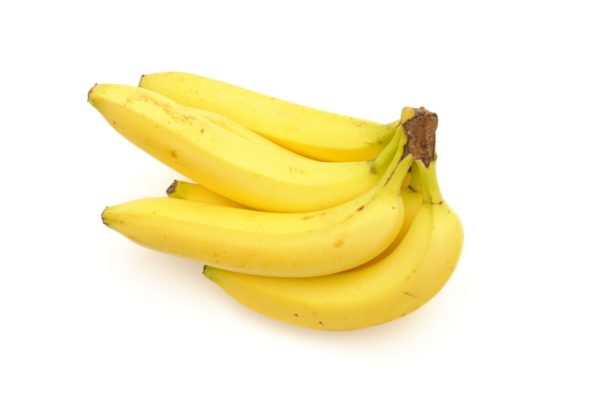
It is easy to prepare nutritious cocktails for orchids at home based on natural, natural ingredients. The available tools are easy to use, they are in the house or in the store. Such food is healthy and environmentally friendly, it has a lot of minerals, vitamins, amino acids. Garlic broths help fight insects and kill harmful microorganisms.
Banana
The banana peel has a lot of trace elements. It contains enough potassium necessary for the development of flowers. In order for the orchid to bloom, you need to fertilize it with a banana remedy once a month.
Tea recipe:
- the peel is dried for 2-3 days in a dark, dry place;
- crushed to a powder mass;
- a spoonful of banana raw bred in a liter of water;
- mix thoroughly;
- leave for 2 days to insist;
- liquid is filtered;
- diluted 1: 2 with warm water, mix, water the flowers.
Broth of potatoes
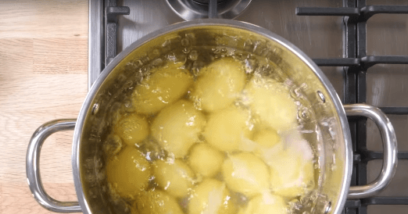
Potato is an organic fertilizer for plants. The broth can not be left the next day, use the product only in fresh form.
Vara recipe:
- wash potatoes, peel;
- cleaning pour boiling water, leave to cool;
- when the temperature of the liquid is 30-35 * C, it is filtered;
- pour broth flowers every 10 days.
Fern root
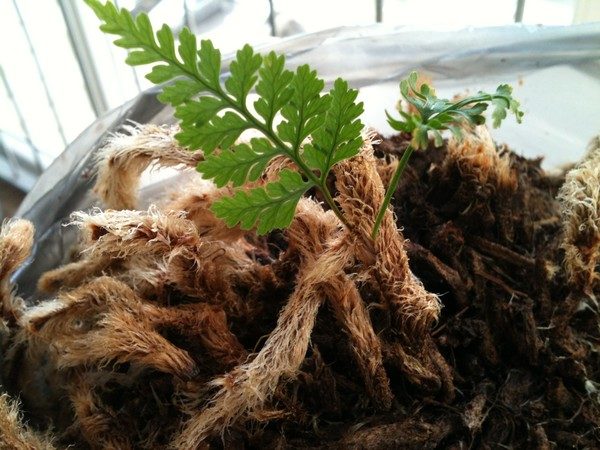
Gather the roots of the common fern in the forest. Roots are washed in a solution of potassium permanganate for disinfection, then washed in clean water. The raw materials are mixed together with pine bark 1: 2, flowers are planted in the substrate. You can make tea from fern roots.
Making tea:
- washed roots set to cook for 2-3 minutes;
- dilute the product with clean water to the state of light tea;
- make during watering.
Onion broth
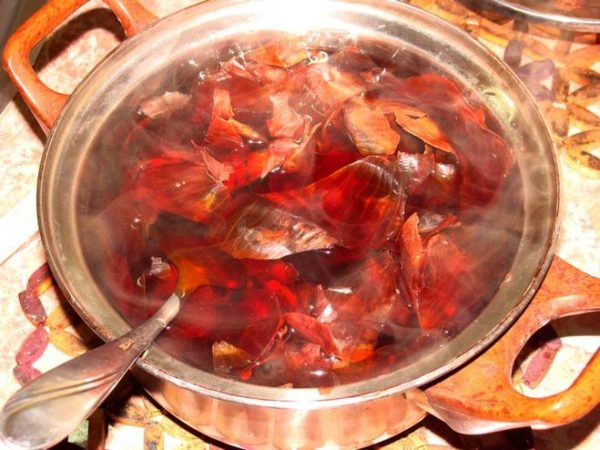
In the onion peel are all the necessary substances for orchids, but you should not abuse the remedy. The broth is used fresh, not used the next time.
Recipe:
- a handful of onion husks are boiled in 1 liter of water for 10 minutes;
- leave to cool;
- diluted with water to a light shade;
- flowers are watered under the root twice a month.
Aloe
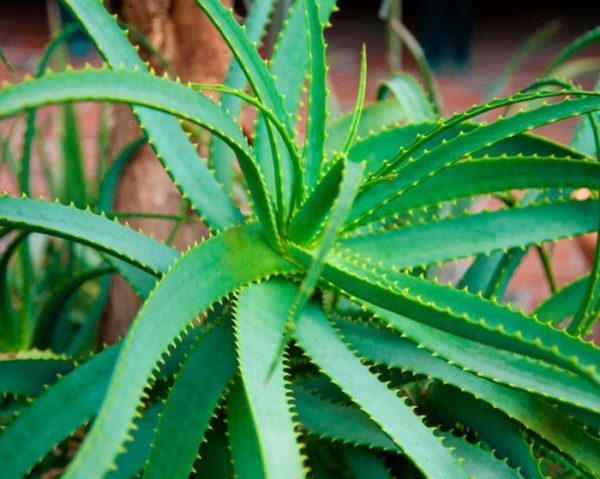
The healing plant grows on the windowsill in the apartment, you can ask for it from a neighbor or buy aloe juice in a pharmacy. Aloe is a natural growth stimulant. Use the product only for an adult, older than 3 years.
Recipe:
- aloe leaves are washed;
- squeeze the juice;
- diluted with water 1:10;
- water the orchid once a week.
Sugar, tea, ash
If the flower has lost its rhizome due to illness or drought, then glucose feeding will help to recover faster. A glucose tablet is diluted in 1 liter of water, a spoonful of sugar is added, mixed. The solution wiped the sheet plates, and put compresses. You can add yeast to sweet water, infuse for 24 hours and water the plants with yeast twice a year.
Do not throw away tea leaves after drinking it. It is enough to pour boiling water over the remaining mass, let it brew and pour warm infusion under the root of the flowers.
Use ash of coniferous trees. It is rich in trace elements. 150 g of ash are diluted in 1 liter of water and watered under the root once a month.
Rules for feeding orchids
In order not to burn the roots with fertilizers, the plant is watered or soaked in clean water.For feeding, all preparations must be diluted with water in small doses - 3-4 times less than indicated on the label.
If the new drug is used for the first time, then first make a test on a leaf. Put the diluted agent on a sheet plate and after an hour see if there is a reaction to the substance. If a stain appears, the color of the leaf has changed - the substance is not suitable for fertilizer.
For irrigation take warm, settled, clean water without chlorine. They also use melt and rain water, heated to 30 * C.
Orchid Nutrition Tips
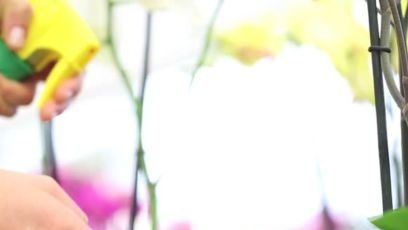
Certain rules and conditions of care will help to avoid troubles and not harm orchids. The flower should be in a comfortable condition so that flowering lasts longer, and peduncles appear more often.
Feeding Tips:
- use complex preparations for phalaenopsis;
- you can not use a concentrated product, only diluted;
- indicators of soil acidity 5-7 pH;
- immunocompromised flowers do not feed;
- diseased plants are first treated, only after a month they resume nutrition;
- if the orchid bloomed for several months, then it needs a rest and a break, it is impossible to stimulate the formation of flower branches again;
- do not recommend using root and foliar dressing at the same time, between them make a gap of 7-10 days;
- organic matter is not introduced if the bush has a minimum of 6 leaves;
- mineral and organic additives are used alternately so as not to harm the plant.
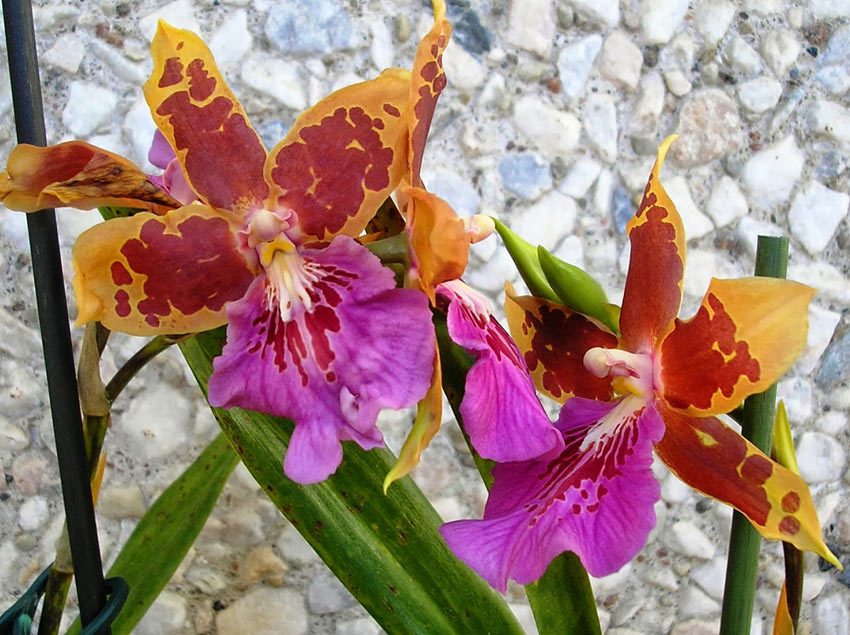 You may be interested in:
You may be interested in:Reviews
Margarita, Khabarovsk
My orchid is 4 years old. The plant bloomed 2 times a year, there were no problems. This time the buds appeared on the peduncle, but all fell. At the same time, the flower looked healthy. I was advised to turn the plant the other side to the light, more often moisturize and feed with complex fertilizers. New buds appeared on the old arrow, I hope everything will work out.
Violetta, Moscow
I bought an orchid with large burgundy flowers, I could not get enough of it. Suddenly the flowers dropped, I did not know what to do. I pulled a flower from the pot and saw a small peat cup, I took it off, removed the damaged roots, sprinkled with charcoal and put it back into the pot. The flower came to life, new buds appeared. With top dressing advised to wait until the end of flowering.
Tamara, Saratov
I began to feed the orchid recently, although she is more than 4 years old. I was interested: when can I fertilize and with what orchid? For six months, flower arrows did not appear, but the old ones dried up. After feeding Agricola, after a month and a half, 2 peduncles appeared immediately, one already has buds.
Properly selected preparations will provide a tropical flower with the necessary nutrition for a long time. Timely fertilizers will help to avoid diseases and falling buds. The main thing is not to overfeed the orchid. Observing the rules of feeding, phalaenopsis will bloom for a long time and abundantly, grow roots and green mass.

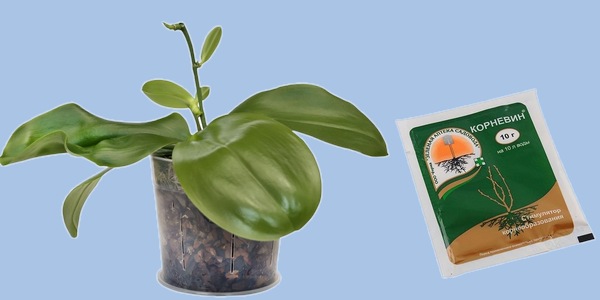
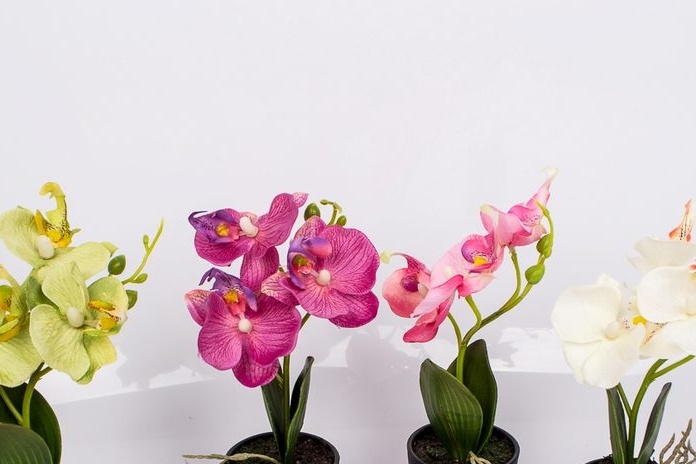
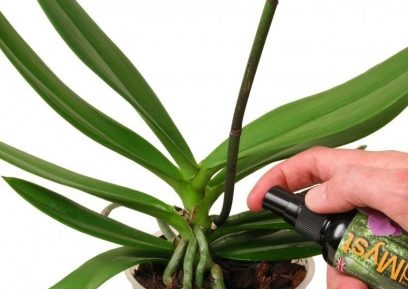
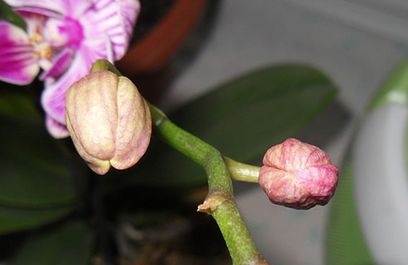 Reasons why orchids fall flowers and what to do
Reasons why orchids fall flowers and what to do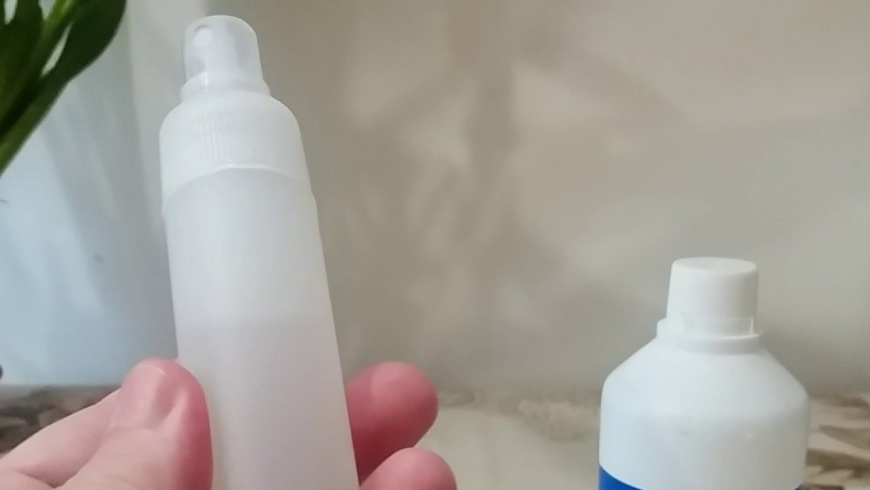 How to use hydrogen peroxide for orchids and why
How to use hydrogen peroxide for orchids and why Midges are wound up in the orchid: effective ways to get rid
Midges are wound up in the orchid: effective ways to get rid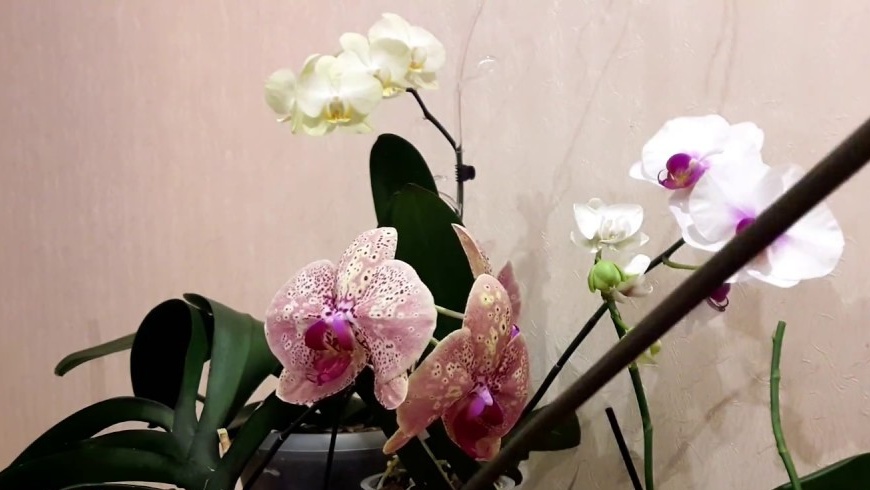 Is it possible to transplant an orchid during flowering
Is it possible to transplant an orchid during flowering